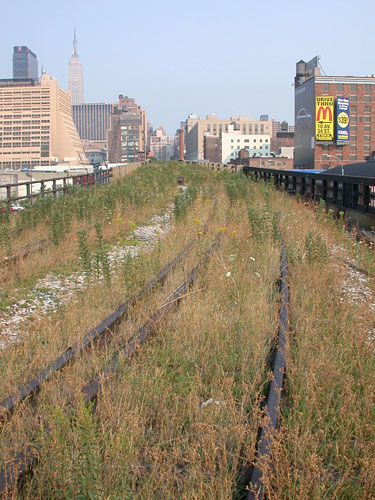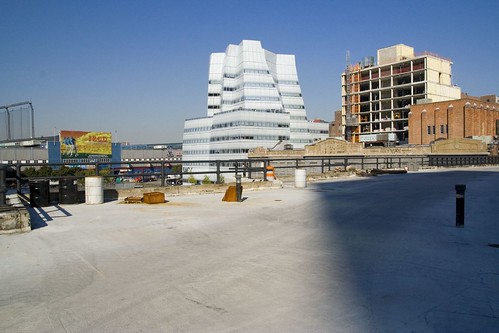Forest Succession in Manhattan: The High Line
On the West Side of Manhattan, an old elevated railway that's been abandoned for twenty-five years shows us how urban plants and trees can re-colonize and thrive in the middle of the nation's biggest city.
Succession typically works this way: after a large disturbance, like a fire or windstorm, fast-growing weeds and shrubs move in to stablize and reinvigorate the soil. These give way to fast-growing trees, which in turn get crowded out by slow-growing, shade-tolerant climax species.
The High Line ceased its railroad operations in 1980, and even though it started with no topsoil to speak of, the abandoned viaduct has come a long way towards growing a forest.
Even while the railroad was operating, meager scraps of dust and soot gathered amidst the railbed and began supporting mosses and a few hardy grasses. Over the years, more dust, leaves, and soot blew in. Each fall, the topsoil gained another layer of dead grass and leaves from pioneer weeds like goldenrod, Queen Anne's lace, and Ailanthus Altissima.
Given a few more years, the High Line might have begun to support larger trees, including birches and oaks. But the High Line's succession is taking place amidst the parallel succession of the Meatpacking District, where pioneer nightclub and art studio species are losing their habitat to multi-million dollar condos and Frank Gehry's masturbatory late-empire architecture. A few years ago, artists looked down on the green ribbon of the High Line and proposed a public park. Developers saw dollar signs, and so this is how the High Line looks today:
When construction is finished, the new High Line park will have benches, new concrete paths, easy access from the street level, and drought-tolerant landscaping that mimics the wild weeds that inspired the park.
It might seem like an interruption and commodification of the wild successional process, but New York is nothing if not habitat for homo sapiens, and the new High Line fits in perfectly with New York's typical neighborhood succession: places once run-down and diverse inexorably become unaffordable and boring. At least until the next large disturbance, anyhow.
Visit NYCviaRachel's Flickr page for more High Line construction photos.


 Photo: Jason Levine
Photo: Jason Levine The High Line, scraped clean and ready for new landscaping, while secondary-growth condos and Gehry emerge from the weeds in Chelsea. Photo: NYVviaRachel on Flickr
The High Line, scraped clean and ready for new landscaping, while secondary-growth condos and Gehry emerge from the weeds in Chelsea. Photo: NYVviaRachel on Flickr

No comments:
Post a Comment